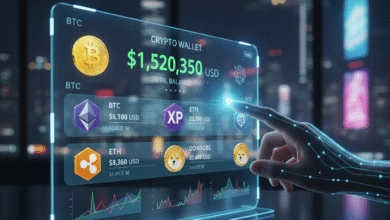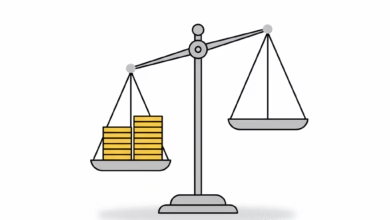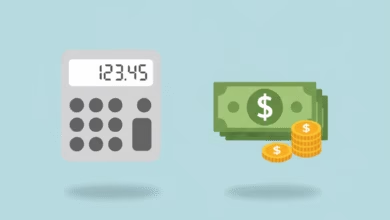Why do we buy what we don’t need?
Understand why we sometimes buy things we don't need
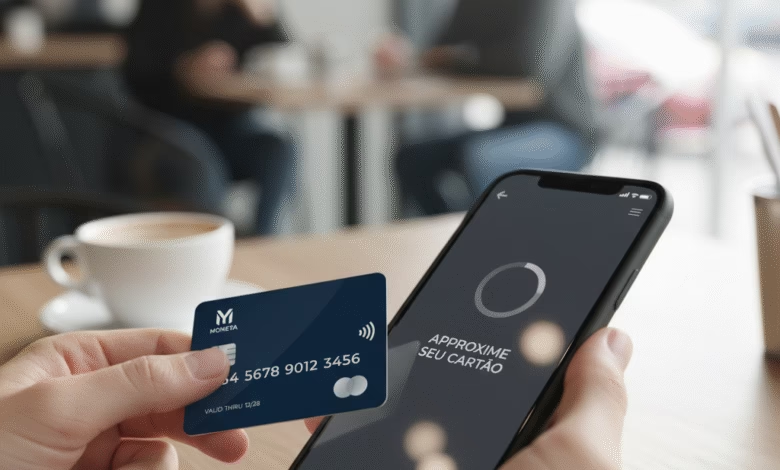
How many items still have the tags on them? How many pairs of shoes have you worn only once? Now, look in your garage, your kitchen cabinets, your desk drawers. How many gadgets, tools, and “must-have” items are collecting dust?
If you’re like most Americans, you’re surrounded by stuff—stuff you worked hard for, paid good money for, and genuinely wanted at the moment of purchase.
And stuff you absolutely do not need.
This isn’t a personal failing. It’s not a sign of weakness or stupidity. It is a fundamental, predictable, and deeply human behavior. We are all wired to be “bad” with money because we aren’t logical creatures. We are psychological creatures.
The gap between “what we need” and “what we buy” is the single biggest obstacle standing between you and your financial goals—whether that’s getting out of credit card debt, saving for a home, or building an investment portfolio.
This article isn’t about shaming you. It’s about arming you. By understanding the deep-seated psychological triggers and sophisticated marketing tactics that drive this behavior, you can finally take back control from your impulses and start using your money to build a life you actually want, not just a house full of stuff.
The Emotional Triggers: What Are You Really Buying?

The first and most important truth is this: We almost never buy things. We buy feelings.
When you’re standing in a store or scrolling online, you aren’t just evaluating a product’s features. You’re unconsciously seeking a solution to an emotional problem.
1. The Dopamine Rush (The “Shopper’s High”)
Your brain has a reward system, and its drug of choice is dopamine. When you anticipate a reward—like finding a “great deal” or just thinking about buying that new item—your brain releases this “feel-good” chemical. It’s a temporary, addictive high.
Marketers know this. The entire e-commerce experience is designed to maximize this rush. The “Add to Cart” button, the “You’ve Got a Package!” notification—it’s all part of a loop that makes you feel good, briefly. The problem? Like any high, it fades quickly, leaving you with the “shame hangover” of the purchase and the need for another “fix.”
2. The Comfort Blanket (Emotional “Retail Therapy”)
We have all been sold the myth of “retail therapy.” This is the act of spending to cope with negative emotions.
- Had a terrible day at work? You “deserve” that $200 pair of shoes.
- Feeling sad or lonely? An hour of scrolling and “treating yourself” can numb the feeling.
- Just plain bored? Shopping is a form of entertainment, a “treasure hunt” that fills the empty space.
The purchase isn’t about the item; it’s about self-medication. You’re using a financial tool (money) to treat a psychological wound, which almost never works.
3. The Need to Belong (FOMO and the “Joneses”)
Humans are social creatures, wired for tribal belonging. In the 21st century, our “tribe” is often on social media, and our “belonging” is signaled by what we own.
- FOMO (Fear of Missing Out): You see an influencer unboxing a new gadget, or your friends post photos from a trendy, expensive restaurant. Suddenly, you feel a deep, primal anxiety of being “left behind.” You buy the product not because you need it, but to participate, to be “in the know.”
- Keeping Up with the Joneses: This is the classic comparison trap. Your neighbor gets a new car, so you suddenly feel your perfectly good car is inadequate. You’re not buying transportation; you’re buying status. You’re trying to prove to the world (and yourself) that you are successful.
The Mental “Bugs”: How Our Brains Trick Us Into Overspending
Our brains are full of cognitive biases—mental shortcuts that help us make quick decisions. While these shortcuts are useful for survival, they are catastrophic for our bank accounts.
1. The Scarcity Principle (“Limited Time Only!”)
This is one of the most powerful psychological triggers. When something is perceived as scarce, our brain instantly assigns it more value.
- “Only 2 left in stock!”
- “Flash sale ends at midnight!”
- “Exclusive one-time offer!”
This triggers our FOMO and panics our brain into making a decision now. We’re so afraid of losing the “opportunity” that we never stop to ask the most important question: “Did I even want this in the first place?”
2. The “Anchoring” Trap (The Power of the Original Price)
Why do “sale” prices feel so good? Because of a bias called anchoring.
When a store presents an item, they “anchor” your perception of its value with the first price you see.
- “Was $500, Now Only $250!”
You’re not evaluating if the item is worth $250. You’re reacting to the deal. You’re anchored to the $500 price, and the 50% “win” gives you a rush. You feel smart, like you’ve “beaten the system.” But in reality, the “original” price was likely inflated from the start, and the seller wanted you to pay $250 all along.
3. The “Free” Illusion (The Sunk Cost Fallacy)
Our brains are pathologically obsessed with the word “FREE.”
- “Buy Two, Get One Free”: You only needed one, but you buy three to get the “free” item. You just spent 100% more than you planned.
- “Free Shipping on Orders Over $100”: You have $85 in your cart. You’ll spend another $15 on junk you don’t need just to avoid paying $7 for shipping.
This ties into the Sunk Cost Fallacy—the feeling that once we’ve started a process, we have to finish it. We’ve already spent time shopping, so we feel we must buy something to make the “effort” worthwhile.
How Modern Business Makes Overspending Effortless

Your psychology is the battlefield, but marketers, banks, and tech companies are the ones designing the weapons. They are masters at exploiting these biases to separate you from your money.
1. The “Frictionless” Transaction: The Real Danger of Credit Cards
This is the single most important connection for your financial health. The easier it is to pay, the more you will spend.
Our brains are wired to feel the “pain of paying.” When you hand over a physical $100 bill, it hurts. Your brain registers a tangible loss.
But what about when you…
- Swipe a credit card?
- Tap your phone with Apple Pay?
- Click “One-Click Buy” on Amazon?
The pain is gone. The transaction is “frictionless.” It decouples the pleasure of getting from the pain of paying. Credit cards, auto-saved payment info, and digital wallets are designed to remove all friction, making spending an unconscious, automatic habit.
2. “Buy Now, Pay Later” (BNPL): The New Debt Trap
Services like Klarna, Afterpay, and Affirm are perhaps the most insidious modern financial tools. They have successfully disguised debt as a simple “payment plan.”
They anchor you to the small “4 easy payments of $25” instead of the full “$100” price. This tricks your brain into thinking the item is cheaper than it is. You’re not just buying one $100 item; you’re stacking multiple “easy” payment plans on top of each other until you’re drowning in debt—all for things you didn’t need.
3. The Diderot Effect: How One Purchase Snowballs
Have you ever bought one new thing, and it suddenly made everything else you own look old and shabby?
This is the Diderot Effect, named after the French philosopher who got a new, elegant dressing gown. He loved it, but it made his old, comfortable study look… wrong. So he bought a new rug. Then a new desk. Then new art. By the end, he was surrounded by luxury he didn’t want and was deep in debt.
Marketers love this. They don’t just sell you a couch; they sell you the entire living room set. They know that one purchase often acts as a “gateway drug” to a dozen more.
The Real Financial Cost of “Stuff You Don’t Need”
This isn’t just a quirky psychological topic. This is a five-alarm financial fire. This single habit is the primary reason most people fail to build wealth.
1. The Crushing Weight of “Stuff” Debt
When you buy things you don’t need, you’re not paying for them with your savings. You’re paying for them with your future. The primary fuel for high-interest credit card debt is the accumulation of small, needless purchases. That $50 item you put on a 22% APR card can end up costing you $80, $90, or more. It’s a quicksand you can’t escape.
2. The “Opportunity Cost”: What You’re Really Losing
This is the concept that will change your life. The “opportunity cost” is the hidden, invisible cost of your purchase. It’s what that money could have been doing if you hadn’t spent it.
Let’s say you spend $1,000 a year on clothes, gadgets, and subscriptions you don’t really need. That’s about $83/month. It seems small.
But if you had invested that $1,000 every year in a simple S&P 500 index fund earning an average of 8%…
- In 10 years, you would have $15,645.
- In 20 years, you would have $49,422.
- In 30 years, you would have $122,345.
Your “harmless” spending habit didn’t just cost you $30,000 over 30 years. It cost you over $122,000 in future wealth. That is the true price of the stuff you don’t need.
How to Break the Cycle and Reclaim Your Financial Power

You cannot just “decide” to stop. You have to build a system that defends your rational brain from your emotional one.
1. Institute a “Cooling-Off” Period (The 24-Hour Rule)
This is your #1 weapon against impulse. For any non-essential purchase over a set amount (say, $50), you must wait 24 hours.
Put the item in your online cart and close the browser. Walk out of the store.
In 9 out of 10 cases, the dopamine high will fade, and your rational brain (“System 2”) will take over. You’ll realize you don’t actually want or need it.
2. Know Your Triggers (The H.A.L.T. Method)
Your willpower is a finite resource. Don’t shop when you are vulnerable. Use the H.A.L.T. acronym. Never make a purchase when you are:
- Hungry
- Angry
- Lonely
- Tired
These physical and emotional states decimate your self-control. Find a different coping mechanism: take a walk, call a friend, eat a good meal, or take a nap.
3. Create a “Values-Based” Budget (A Permission Slip to Spend)
The word “budget” sounds like a prison. Reframe it. A budget is a permission slip to spend money on the things you actually value.
First, identify your true values. Is it freedom? Security? Experiences? Family?
Look at your bank statement. Does your spending align with those values? You’ll quickly see you’re spending hundreds on “junk” (which you don’t value) and not enough on “freedom” (savings and investments). A budget is the simple tool that redirects your money from mindless consumption to mindful goals.
4. Add Friction Back Into the System
If “frictionless” spending is the enemy, the solution is to add friction.
- Delete Your Saved Credit Card Info: Force yourself to get up, find your wallet, and manually type in the 16 digits. That tiny bit of “effort” is often enough to make you reconsider.
- Use the Envelope System: For “danger” categories like dining out or clothes, pull out a fixed amount of cash at the beginning of the month. Put it in an envelope. When the cash is gone, you’re done. It forces you to feel the “pain of paying” again.
- Unsubscribe: Unsubscribe from all marketing emails and “deal” alerts. You can’t be tempted by a sale you don’t know exists.
5. Practice “Financial Mindfulness”
Before you buy, pause and ask yourself a simple checklist of questions:
- Why am I buying this? (Am I bored? Sad? Trying to impress someone?)
- Where will I put it? (Do I have space for this?)
- What job will it do? (Do I already own something that does this job?)
- How will I feel about this in a week? A month? A year?
Redefining “Rich”
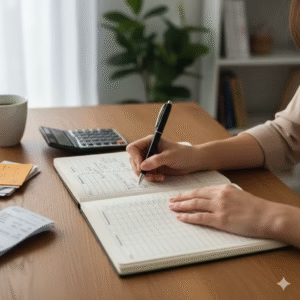
We live in a culture that screams at us from every screen: “Buy this, and you will be happy. Buy this, and you will be successful. Buy this, and you will be loved.”
It is the great lie of consumerism.
Buying things you don’t need is the “junk food” of your financial diet. It feels good for a second, but it leaves you broke, stressed, and empty.
True wealth isn’t about having more stuff. It’s about having more options. It’s the freedom to quit a job you hate. It’s the security of knowing you can handle an emergency. It’s the peace of being out of debt.
This isn’t about becoming a minimalist who owns nothing. It’s about becoming a conscious consumer—a person who has finally aligned their spending with their values. Every dollar you don’t spend on something you don’t need is a dollar you can use to buy your own freedom.

